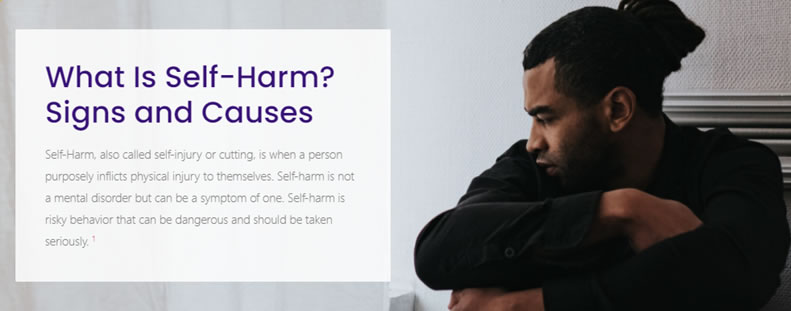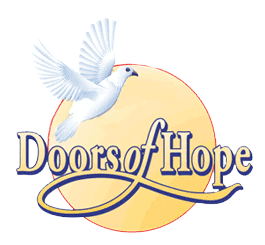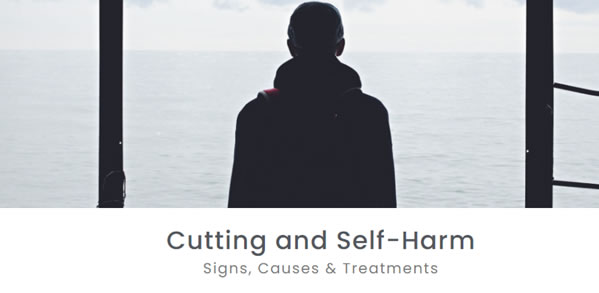
WEBSITE
Cracked Armour
Living with PTSD by Cst. Erich Schmidt Photo credit: JJ Schmidt (beautiful wife)
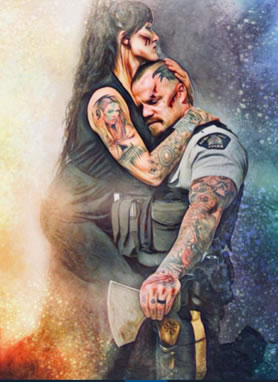
First off, I’d like to talk about the attached image that was created by my amazing wife. My hope is, that just by viewing this image, you have grasped the essence of what she has captured, and that being the raw emotions that come with living with PTSD, not just for the one carrying it within, but for the loved ones who see the pain and suffering on a daily basis.
When I speak of PTSD, I am encompassing all that comes with it for me. The depression, anger, internal pain, constant anxiety, hyper vigilance, mood swings, the frustrations for feeling this way and the inability to control it some days. On top of that there are physical manifestations from PTSD as well, digestive issues, migraines, lowered immunity, adrenal fatigue, body aches and pains, insomnia and an onslaught of other physical ailments.
What the image represents and what I will explain in my story is how we view and battle with my PTSD and the darkness that comes with it. My wife and I are followers of the Pagan belief and are warriors by nature, so naturally, we have captured this in the image. The battle wounds represent the daily scars and wounds that we incur from dealing with PTSD. The axe represents my fighter mentality and battle within myself each and every day and that I reach for the weapons that aid me. The strong embrace from the light shows what love and support can provide to the weary warrior, trying to protect and pull him from the darkness. Our tattoos, capture our life, adventures, memories, and our journeys as we follow our fated paths through life. Finally, the uniform represents the career(s) which creates and perpetuates the demon I know all to well as PTSD.
For anyone that knows me, I am a very blunt, hard-headed, and straight to the point guy who is highly devoted first, to his family, and second, to his job as a police officer. Sometimes the balance between these two is an internal struggle within itself.
Going back to my teenage years, I moved out on my own and decided to take on the world, not fully finishing high school, I found myself moving from job to job. I did not keep to the straightest and narrow path through my younger years and one day, I realized that I had to make a decision, either continue where I was going or make a drastic change and better myself. I was lucky enough to have spent a lot of time with my neighbour, who was a veteran from the military, and who would tell me many stories about his life, I started to feel the urge to enlist myself as soon as I could. The day I stood in my living room, watching the events of 9-11 on the tv, and hearing that the Canadian Military was standing up and sending troops overseas to fight, I knew right then and there that this was my calling.
Two days before my 21st birthday, I swore into the Canadian Military and within a week, was off to boot camp which took me on a whirl wind of a journey for many months till I found myself arriving at my new home and meeting my new family, the 1st Battalion Princess Patricia Canadian Light Infantry.
September of 2009, I found myself signing off on my will and finally boarding a Hercules airplane, destined for Afghanistan. Here I spent eight and half months learning firsthand how fast life can be and how fast it can be taken away. It was here, in the poo dust of the Afghanistan sands that I unknowingly started to change and take on demons of which I was completely unaware of. Upon finishing my combat tour and returning home in 2010, I found myself on the first night back, sitting in my very quiet apartment, trying to grasp on to the reality of “normalcy”, what I was suppose to do with myself here? I was so used to waking up every morning with the main mission which was to stay alive, keep my mates alive, and keep all my phalanges attached, and here I was now, dealing with the everyday life of North American society. I found myself longing to be in a hostile environment because that is where I felt most comfortable. It was not long before I found myself working at a local bar in downtown Edmonton, Alberta, the environment was loud, fast moving, and there was a fight at the bottom of every pitcher.
At this point in my life, I did not recognize how much I had changed, what I had brought home with me from Afghanistan, both physically and mentally. I found myself so eager to go back overseas that I jumped on the next rotation that I could.
During the short time that I was home between tours, I met the woman who would later save my life over and over again, and whom I am lucky to call my wife.
This time, boarding that big Hercules airplane destined for Afghanistan, I started to have conflicting feelings and found myself wanting to be with her rather than going to the land of poo dust again. I vividly remember and can even smell it now, when the back hatch of the plane opened up and I felt the blast of the warm stinky Afghanistan desert winds hitting my face like a punch from a drunk 3rd Battalion guy.
During the six and a half months I spent in Afghanistan on this rotation, I found myself not as excited to be shot at, dreading driving over holes in the ground which would make us pucker up and await the big bang of an IED. I found myself just wanting to be home. During this tour, like the last, I found myself too many times on the Kandahar Airfield, standing at attention, listening to the bag pipes as we saluted and said our farewells to our fallen brothers and sisters and to this day, I can not even think about nor listen to the sounds of bag pipes without my body clenching up and tearing up. Still in the dark to the demons that were manifesting in my body and mind.
Somehow, I was lucky enough to have made it home for a second time and upon getting to embrace JJ again, I decided this was enough for me and I released from the military in 2012.
I hastily found myself working within the Calgary Remand Centre as a prison guard which was a job that I found to be very comfortable and suiting for my mentality. Looking back now, I can see why, rubbing shoulders with monsters and people battling their demons felt natural and comfortable to me. The constant fights, code calls, screaming and yelling amongst the prisoners and guards became a daily environment for me, some days, feeling institutionalized myself.
Due to internal politics, I found myself searching for a new career and this is when I applied for the RCMP.
In 2014, I signed my paperwork and was en-route for good ole Depot where I struggled not with the academic side of things, but with the being treated like a civilian who knew nothing and had no life experience. This was not the case with all the facilitators, but with many I found during my six months there. I battled with many internal conflicts during my training as well as many outside events that decided to compound upon me, catching pneumonia, being down for days, having a death in the family, financial issues and so on. All of these things that began to manifest within me and unknowingly, started to meld with the demons that I already carried within. Somehow, I managed to swallow all those feelings and found myself on the parade square, sweating my ass off in my fancy red serge, graduating and being posted to Ridge Meadows, BC.
I adapted to the new career fairly well and found that I was most comfortable with the high-risk situations. Even to this day, I would much rather a high stakes active shooter call rather than a theft or fraud call, as many members would be based off of my experience and observations.
In October of 2016, JJ and I were blessed by the Goddess Freyja, with our daughter, this precious little human, has saved me many times over.
In 2018, I found myself completing my first lengthy PHA (physical health assessment) documentation. From this process, I found myself having to conduct a psychiatry appointment which would open my eyes wider than they have ever been before!
During that appointment I found myself face to face with a very eccentric, appearing unorthodox in nature at times, psychiatrist. Prior to this individual, I had gone through a multitude of other psychiatrists who would treat me like a text book case of this or that and I never found any connections between what they said and how I felt. However, with this certain psychiatrist, I was very comfortable and found myself opening up and expressing feelings that I had buried long ago. At the conclusion of our (what I believe to be fated by the Gods), meetings, I was diagnosed with a high level of PTSD. I remember sitting there, as he took the time and went into depth to show me all the findings from the various graphs and charts that he had me complete based off of many questionnaires, and for the first time, I felt, “holy shit…this all makes a lot of sense now”. I had been carrying so many internal demons for so many years and had no knowledge of their damaging effects.
This was definitely by far, not a cure, but rather a realization for me!
I now found myself conflicted, worrying, “what if my work or bosses find out that I have PTSD”, “what will this do to my career”. Fortunately at this time in my career, I had a supervisor I trusted and I advised them to my diagnosis, and based on mutual respect, no issues came from it at that time.
Now, fast forward several years, through the rollercoaster of life and all that comes with mental health struggles, my family and I found ourselves posted in a smaller northern town, myself at a three-man detachment that turned into a mental health nightmare for me for the first year and a half. We were short staffed, long periods with no days off, no availability for relief, an unexperienced and unprofessional supervisor, watching other co-workers mental health decline, all things that are common to many members in the RCMP. After several months of this, it started to compile and fed my PTSD which had already been stacked high from everything I carried from before. I found myself many nights, sitting at my desk, heart racing, angry, feeling helpless, my mind going places that one’s mind should never go. Did I ever ponder taking my seat in the Halls of Valhalla? yes, yes I did. I reached out and advised my supervisor at the time that, “Hey, I’m going squirrely here and need help, I need days off to collect myself, I need to make it known that there is an issue here”. The response,” That will red-mark your career, thats just part of a northern posting”. That is the stigma that still exists in society and workplaces today, and why so many people are afraid to voice their feelings about their own mental health.
It was then that I decided to say “Fuck it”, and pushed back, pushing for staff, pushing for days off, eventually having the issues rectified but the expense in which I continually pay by having my hands slapped over n over. But, from all of this, and from my wife and daughter being by my side day in and day out, supporting me, no matter how bad I get, I learnt that being vocal, educating people and pushing past that stigma that surrounds PTSD, talking about my mental health with loved ones or trusted people in my life, it helps in more ways than one can think. The more I talk about my struggles with PTSD, the stronger I feel and willing to fight through the dark feelings rather than allow them to restrain me. Once I found my voice, I spoke louder then my fears and demons and found that they had less power over me.
Have I beat my demons…NO, I never will, but I have learnt that they will always be there, within, so instead of fighting them, I have accepted them as part of me and made friends with my shadow self. In doing this, I have found that I am not trying to figure out “what is wrong with me”, but rather learning and adopting new coping mechanisms to coexist with them.
I am lucky, I have a beautiful wife, who has the resilience and stubbornness to keep pushing forward, supporting me and loving me, she educated herself, constantly working to find a way through my darkness and a daughter who brings me light, they are beyond what I feel I deserve and they are what keeps me pushing and why my heart is still beating this day.
As an emergency responder, I know the terrors and monsters we see on a daily basis. We can see more shit and trauma in a single shift than most people see in their entire life, hence it makes complete sense that we will at some point in our careers, have demons move into our bodies and minds. I can’t say it enough, and this is not from a book nor shit spewed to me from a doctor, but rather from firsthand experience, please find that person to talk too, speak your truth no matter how dark it might seem, release your thoughts and worries, unload the weight that you are carrying. Believe me, it does help over time. We have lost too many friends and loved ones to this, the negative stigma behind PTSD and mental health disorders needs to be a thing of the past and our voices need to be heard, by society, by our employers and there needs to be a push for more mental health education.
I do not ask for any thanks, likes, pats on the back, or anything for sharing my story. I simply ask that if you have taken the time to read my story, please share it or share the lesson that I have learnt through my life. If this can even pull one person up from the depths of darkness, that is a win.
I got your 6.
Thanks,
Cst. Erich Schmidt
|
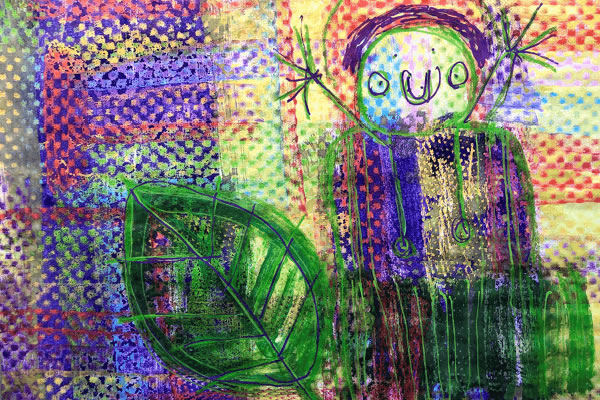
Art and Craft benefits for Young Adults
In a world where mental health and well-being is becoming increasingly important, it is the perfect time for you to join one of Lifebridge Australia’s art and craft programs.
What are the benefits to me, you might ask?
Firstly, it is good for your brain. Did you know that any type of art and craft activity helps to clear your mind and allows you to focus on the present moment? When we are being creative, our minds release feel-good chemicals, which are natural anti-depressants.
Secondly, it improves your self-esteem. The art of making something yourself, using your hands and your imagination is incredibly satisfying and the more you practice, the more confident you become.
Thirdly, creativity is fun. Whether you are painting, knitting, sewing, making dolls, cross stitching, wood working, restoring furniture, upcycling, recycling, making jewellery, it is all about having fun and enjoying the creative process with like-minded people. Building relationships and connecting with others is known to boost positive emotions.
Lifebridge have a diverse range of art and craft programs available:
• Creative Craft – Decoupage, cross stitching, doll making, water colours, folk art and more.
• Tinker Shed – wood working, restoring furniture, upcyling and recycling, paid restoration work.
• Visual Arts – painting, sculpture, mixed media and more.
• Textiles – wood working, bike repairing, tie dying and more.
FOR MANY MORE DETAILS ON THIS SUBJECT SEE WEBSITE |
The Benefit of Arts and Crafts for Mental Health
Hobbies are important. They’re entertaining, fulfilling, and, for the most part, keep us out of trouble. The largest subset of hobbies is most certainly arts and crafts, an umbrella term that covers everything from scrapbooking, jewelry making, and crocheting to painting, sculpting, and model building. These hobbies are more than just rewarding ways to spend our free time, however; they are, in fact, wonderful ways to support better and more robust mental health. Here’s how this process works, why it does what it does, and how you can help improve your own mental health through the simple act of taking up arts and crafts as a hobby.
How arts and crafts affect our mental being
Practicing a hobby like arts and crafts does more for us than developing a practical skill, though that alone is a rather impressive feat. The truth is that participating in any type of artistic endeavor, or sometimes even just observing art, can have a positive effect on our mental wellbeing. In fact, art therapy is already used as one of many therapeutic tools for treating certain types of mental illness, such as depression, anxiety, and post-traumatic stress (Cohen, 2020). That’s not all, however. Harvard Medical School revealed that there are links between cognitive ability and practicing artistic hobbies as well, painting a clearer picture that arts and crafts can actually hone our cognitive abilities as well (Harvard Health Publishing, 2017). There’s even evidence that artistic hobbies even increase blood flow to the brain, oxygenating it and supporting neurological health (Phillips, 2019).
Who Uses Arts and Crafts Therapy and How Does it Help People?
Arts and crafts therapy, often just referred to as art therapy as shorthand, is as an approach to mental health that uses the processes surrounding the creation of art to improve physical, emotional, and mental wellness. These processes are rooted in the theory that healing and mental well-being can be fostered by creative expression (Stuckey & Nobel, 2010, p. 261). While many therapists and rehabilitation specialists will or won’t use art therapy as one of their treatment tools while working with their patients, the truth is that art therapy can be used by anyone with few limitations on age. This makes it a highly accessible form of self-directed therapy for those who can’t or won’t be seen in a professional setting, though working with a specialist can increase the benefits of art therapy significantly.
When overseen by a specialist, art therapy’s blend of psychotherapy and art-making offers a number of strong therapeutic benefits, according to the Columbian College of Arts and Sciences at George Washington University in Washington, DC; these benefits include enhancing self-awareness, fostering relationships and building stronger communities (Columbia College of Arts & Sciences, n.d.). Other proponents of art therapy, such as the Rogel Cancer Center at Michigan Medical, agree, stating that art therapy can reduce emotional distress, elevate mood and foster self-esteem, develop coping skills, improve relaxation, enhance communication, and improve overall quality of life (Rogel Cancer Center, 2020).
FOR MANY MORE DETAILS ON THIS SUBJECT SEE WEBSITE
|



